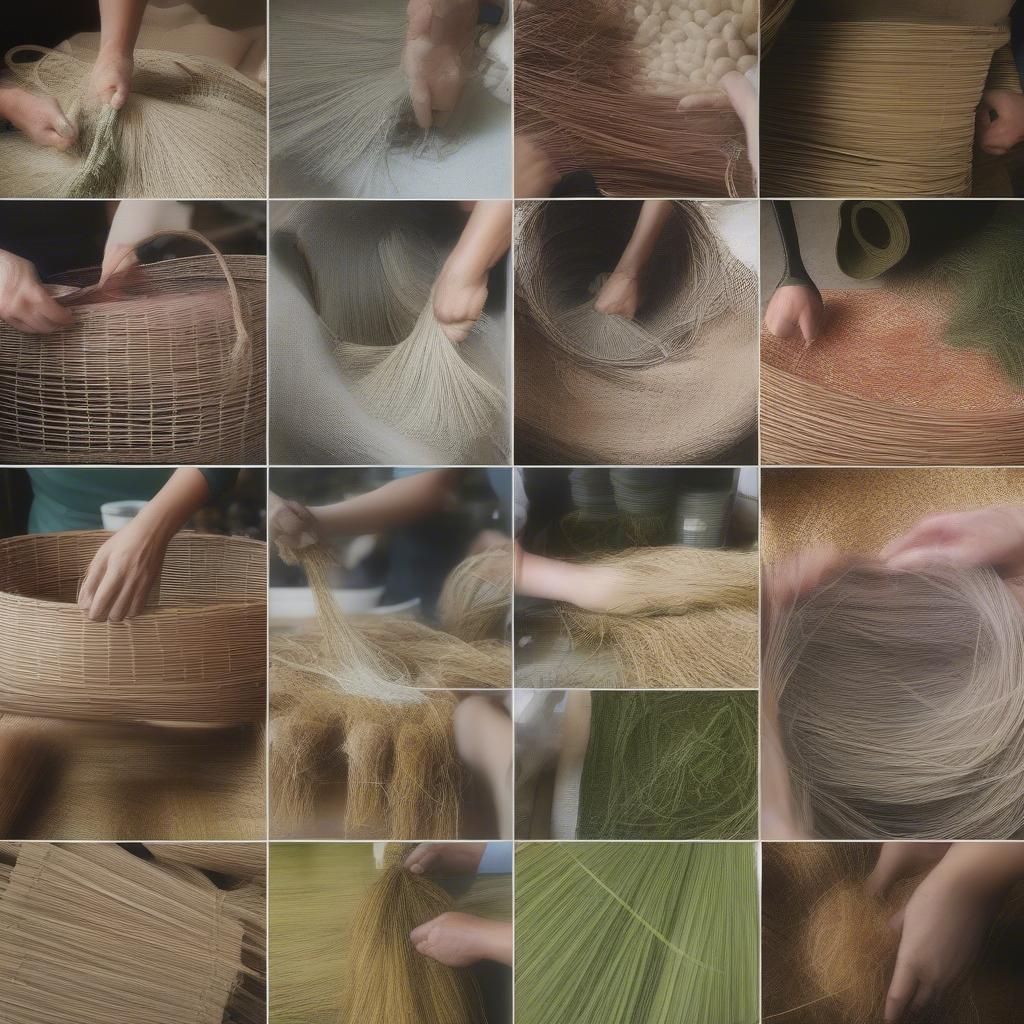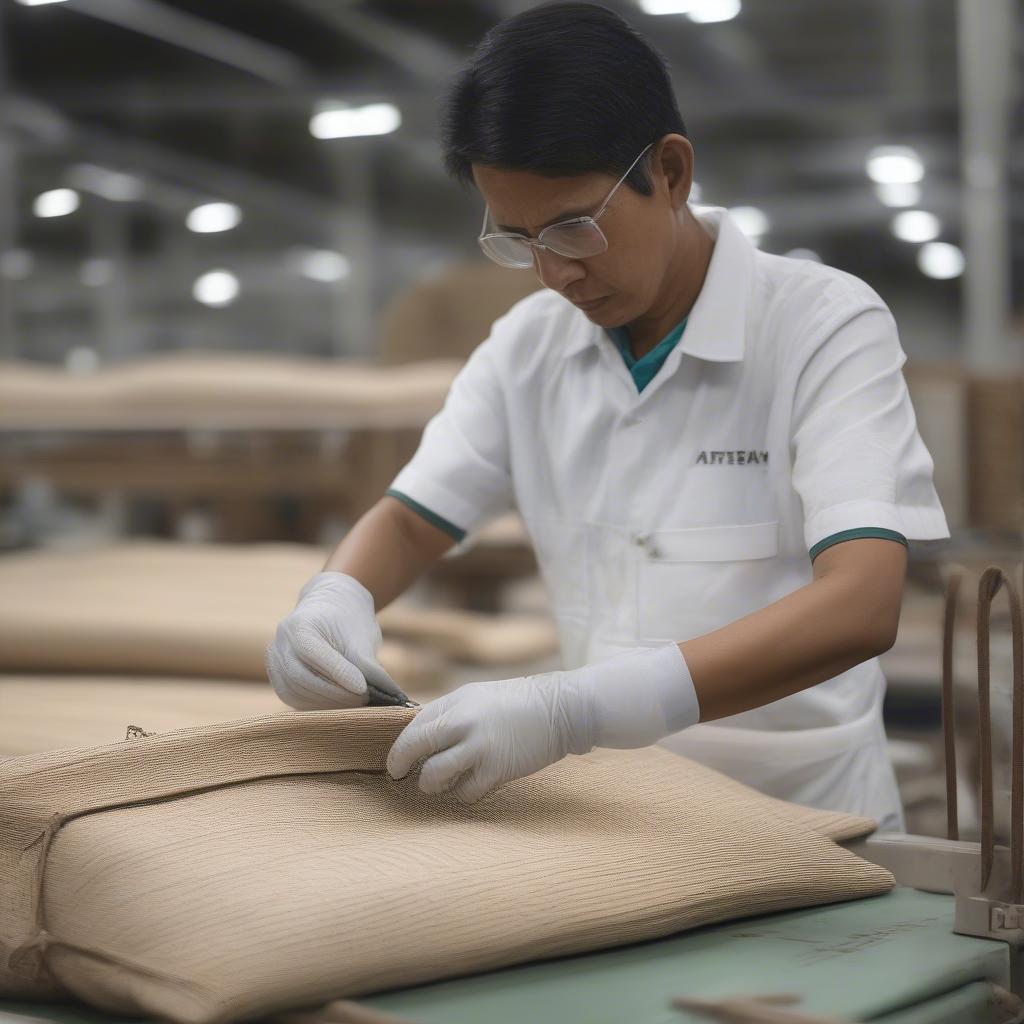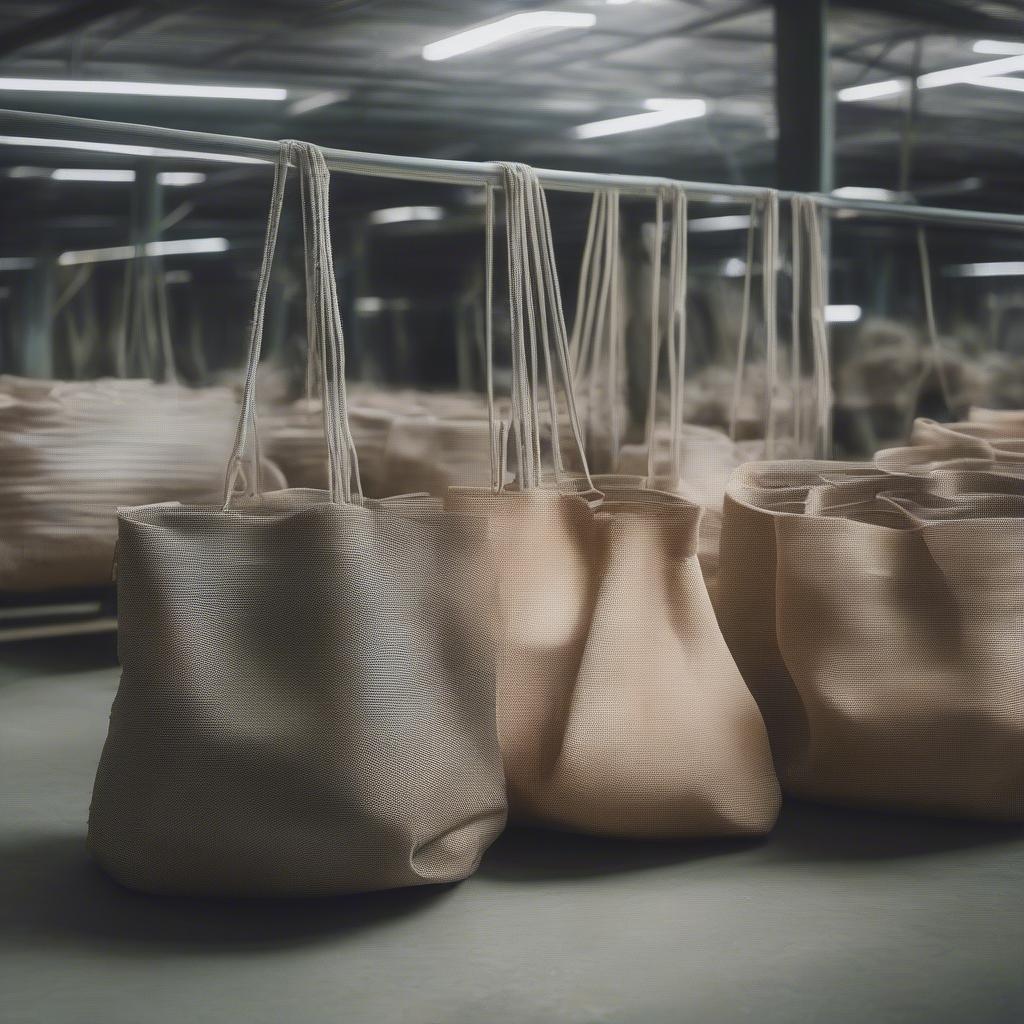Woven Bag
Woven Bag Manufacturing Process: A Comprehensive Guide
The Woven Bag Manufacturing Process is a fascinating blend of traditional craftsmanship and modern techniques. From sourcing sustainable materials to the intricate weaving patterns, this article delves into each step of creating these beautiful and durable bags. We’ll explore the various methods, materials, and the artistry involved in bringing these eco-friendly accessories to life.
Understanding the Woven Bag Manufacturing Process
Woven bags, known for their durability and unique aesthetic, are crafted through a meticulous process. This process, while varying depending on the specific material and design, generally follows a series of key steps. These steps involve material selection, preparation, weaving, and finishing touches. Understanding the woven bags manufacturing process offers valuable insights into the craftsmanship and care that goes into creating each piece.
Material Selection and Preparation
The journey of a woven bag begins with carefully selecting the right material. Popular choices include natural fibers like rattan, wicker, jute, and seagrass, each offering unique properties and textures. Rattan’s flexibility and strength make it ideal for intricate designs, while wicker’s rustic charm adds a touch of natural elegance. The selected material is then meticulously prepared, often involving cleaning, drying, and sometimes even splitting or dyeing to achieve the desired color and consistency.
 Preparing Materials for Woven Bags
Preparing Materials for Woven Bags
The Art of Weaving
The heart of the woven bag manufacturing process lies in the weaving itself. Skilled artisans employ a variety of techniques, passed down through generations, to create intricate patterns and sturdy structures. These techniques range from simple plaiting to complex twining and coiling, each contributing to the bag’s final form and character. The w cut non woven bag manufacturing process illustrates a modern approach to creating durable and practical bags.
Finishing and Quality Control
Once the bag’s structure is complete, the finishing touches are added. This can include reinforcing seams, adding handles or straps, and applying protective coatings. A rigorous quality control process ensures that each bag meets the highest standards of durability and craftsmanship.
 Final Touches and Quality Control in Woven Bag Production
Final Touches and Quality Control in Woven Bag Production
Different Types of Woven Bag Manufacturing Processes
There’s a diverse range of weaving techniques used in creating these beautiful bags. Understanding these different approaches allows for a greater appreciation of the artistry involved. For instance, the non woven bag manufacturing process offers a different approach altogether, using bonded fibers rather than traditional weaving.
Traditional Handweaving
This age-old method involves intricate handwork, often utilizing traditional looms and techniques passed down through generations. Handwoven bags possess a unique charm and character, reflecting the artisan’s skill and dedication.
Machine-Assisted Weaving
Modern technology has also impacted the woven bag manufacturing process. Machine-assisted weaving allows for increased efficiency and consistency, making it possible to produce larger quantities while maintaining quality. The polypropylene woven bags manufacturing process showcases a modern approach utilizing durable synthetic fibers.
Contemporary Techniques
Innovative techniques continually emerge, blending traditional methods with modern designs and materials. These advancements broaden the possibilities of woven bag creation, resulting in exciting new styles and textures.
The Future of Woven Bag Manufacturing
Sustainability and ethical production are increasingly important considerations. The non woven fabric bag manufacturing process offers an eco-friendly alternative. The future of woven bag manufacturing likely involves a continued focus on eco-friendly materials and ethical production practices.
 Sustainable and Ethical Production of Woven Bags
Sustainable and Ethical Production of Woven Bags
Conclusion
The woven bag manufacturing process is a testament to the artistry and skill involved in creating these beautiful and functional accessories. From the careful selection of materials to the intricate weaving techniques, each step contributes to the bag’s final form and character. By understanding this process, we can gain a deeper appreciation for the craftsmanship behind each woven bag and the importance of supporting sustainable and ethical production practices. The woven bag manufacturing process continues to evolve, blending tradition with innovation to create stunning and durable pieces for years to come.
FAQs
- What are woven bags typically made of?
- How long does it take to make a woven bag?
- Are woven bags durable?
- How do I care for my woven bag?
- What are the different weaving techniques used?
- Are woven bags eco-friendly?
- Where can I buy authentic woven bags?
Need assistance? Contact us at Hanoi, Vietnam or Tech Avenue, Suite 12, San Francisco, CA 94105, USA. We have a 24/7 customer support team.
